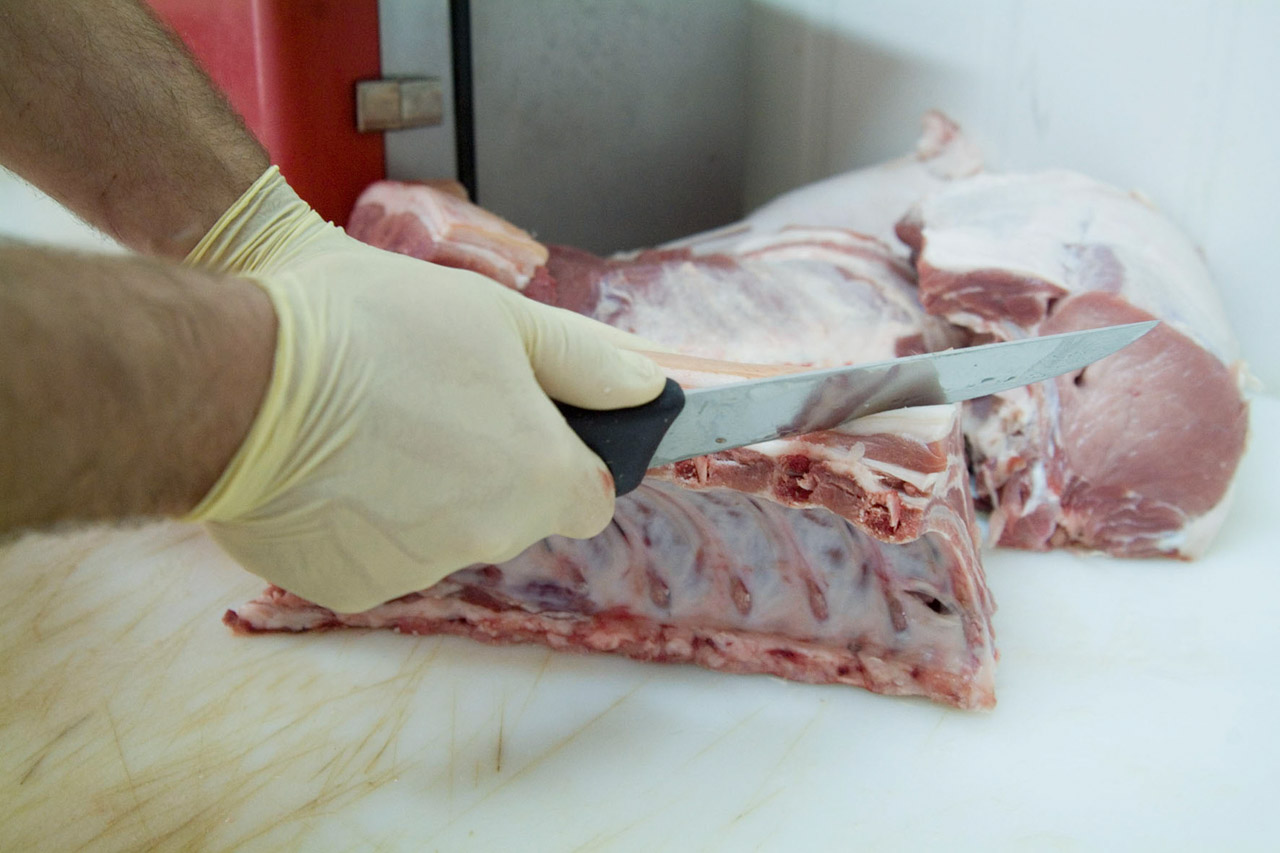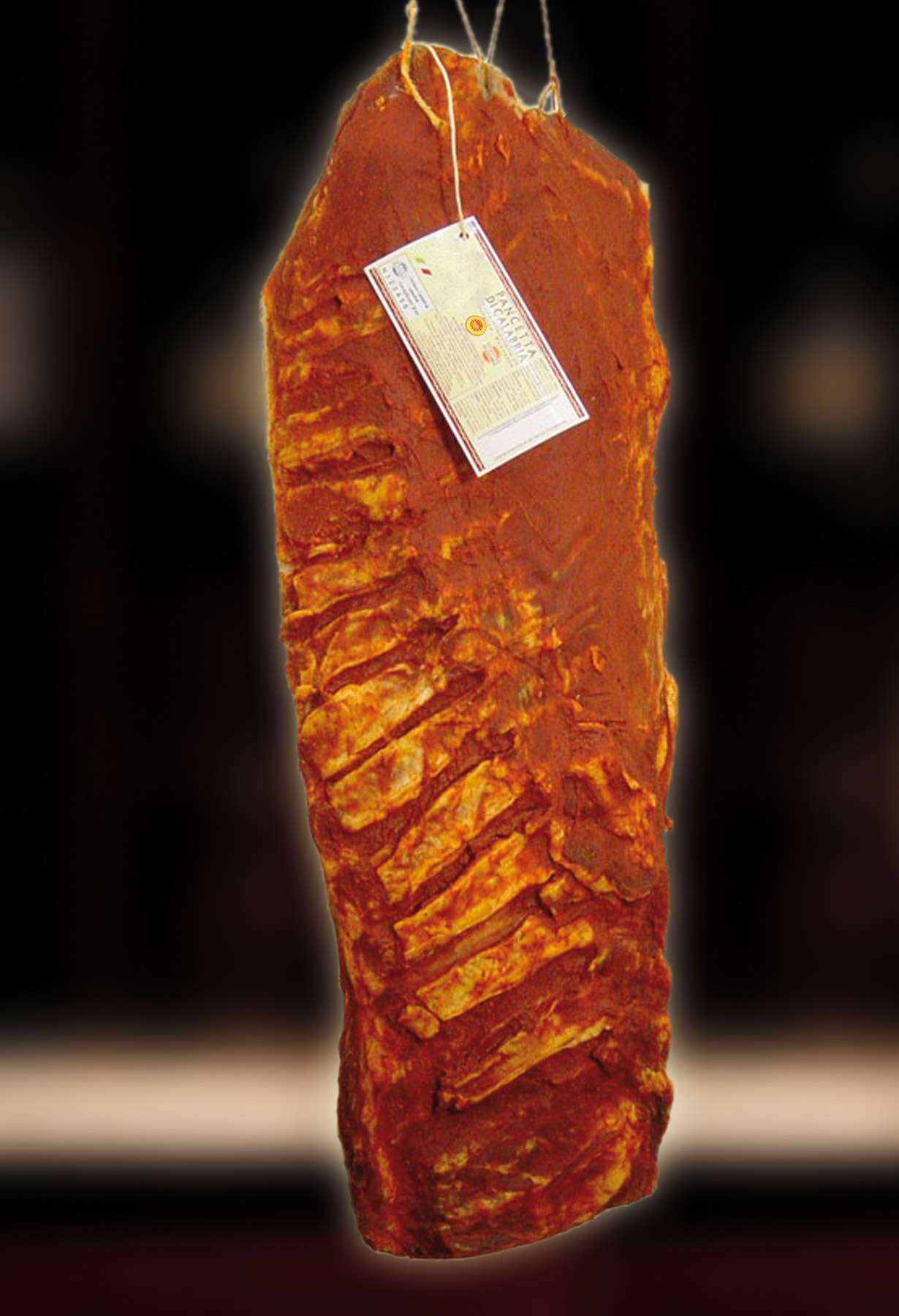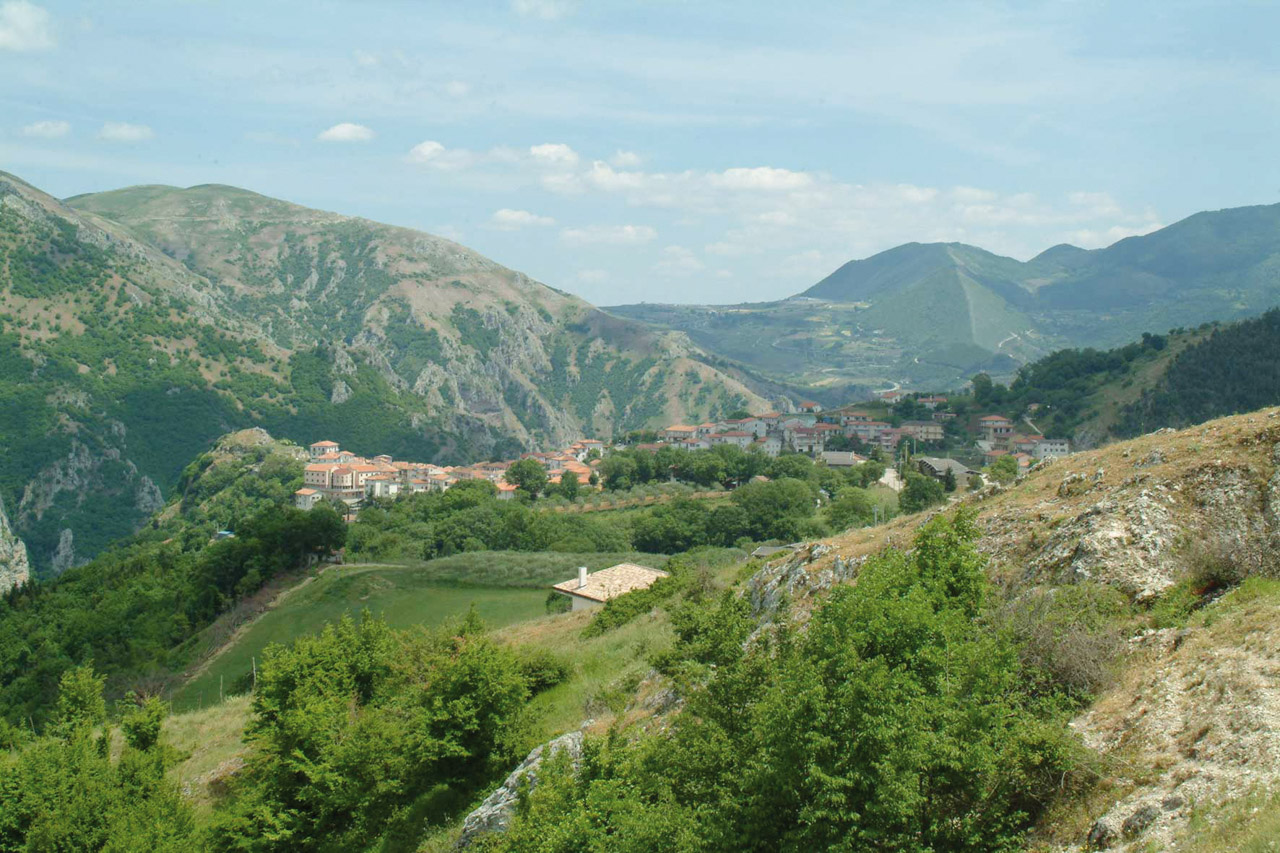Description
Pancetta di Calabria PDO is a salted and cured charcuterie product obtained through the processing of meat from the lower part of the ribs of traditional large-sized pigs belonging to the Calabrese, Large White or Landrace Italiana breeds.
Production Area
The production area of Pancetta di Calabria PDO is within the entire territory of the Calabria region. The pigs used for production must be born within the territory of the Calabria, Basilicata, Sicily, Apulia and Campania regions, and reared in the region of Calabria from a maximum age of four months, then slaughtered and processed in Calabria.
Production Method
The bacon with the rind, weighing between 3-4 kg, is cut into rectangular shapes with a thickness of 3-5 cm. The bacon is dry salted for 4-11 days, after which it is washed with water and moistened with wine vinegar. The surface can be covered with chili powder, for the so-called “peppering”, after which it is left to cure for at least 30 days, in rooms with relative humidity and controlled temperature. If the product is not sold whole, it is portioned or sliced. This procedure must take place exclusively within the production area.
Appearance and Flavour
Pancetta di Calabria PDO is 3-5 cm thick with the rind. Externally it can be characterised by a motley red colour due to the chili powder. The slices are pinkish in colour, with thin alternating streaks of lean meat and fat. The fragrance is intense and natural and it has good strong flavour.
History
The origins of the production of Pancetta di Calabria PDO most likely date back to the Greek colonisation of the Ionian coast. The first written evidence of the processing of pig meat can be found in a text from 1691, Della Calabria Illustrata, in which Padre Giovanni Fiore da Cropani mentions salted meats transformed “into Lards, Sausages, Brawn and similar”. During the French “decennio” (1806- 1815), the 1811 Statistics of the Kingdom of Naples, known as the Statistica Murattiana, registers the “preference for salted pork, which is processed in both of the Calabria regions. People generally choose salt and pepper to adulterate this sought-after delicacy.” In the third section, dedicated to the “subsistence and conservation of populations”, pork is indicated as being “the only meat that is salted in every district”. Calabria has remained one of the few regions where the pork processing culture is still deeply rooted.
Gastronomy
Pancetta di Calabria PDO should ideally be kept in a cool dry place. This charcuterie product can be eaten raw, thinly sliced or cooked. In the Calabrian gastronomic tradition, it is often paired with the classic local salted bread, which is cooked in a wood-burning oven. Pancetta di Calabria PDO is used as an ingredient in various traditional Italian and regional recipes: it is used in the mirepoix for various classic pasta sauces, such as carbonara, or together with fresh broad beans, cooked legumes and polenta, as well as an ingredient in a few typical regional dishes.
Marketing
The product is marketed as Pancetta di Calabria PDO. It is sold whole, in pieces or sliced, vacuum-packed or in modified atmosphere packaging.
Distinctive Features
Pancetta di Calabria PDO owes its organoleptic qualities to the climate of the production area, which is characterised by hot drying winds that also allow for the gradual curing of meats during the summer.

















